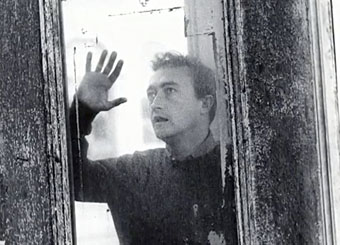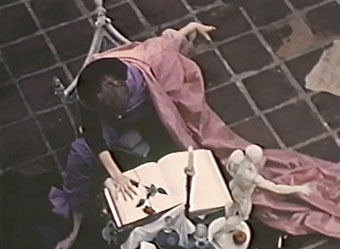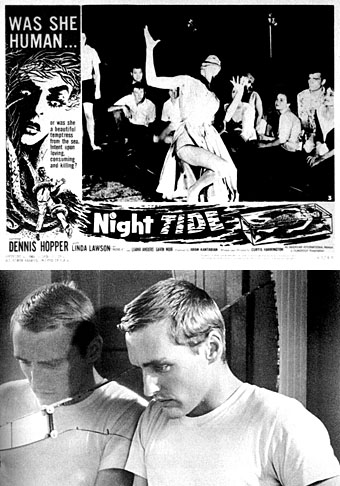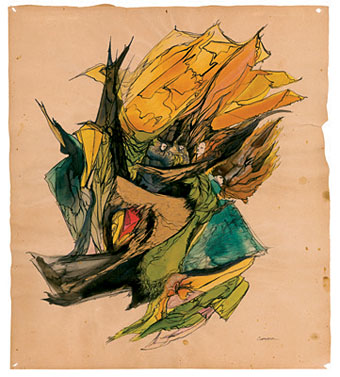Curtis Harrington.
House of Harrington is a short documentary from 2008 about the late filmmaker Curtis Harrington which has just been posted to YouTube by its makers, and by a curious coincidence this appearance occurs in the week of Dennis Hopper’s death. Harrington gave Hopper the lead in his debut feature Night Tide (1961) at a time when the actor was ostracised in Hollywood after a falling out with director Henry Hathaway. Hopper’s diligent performance in Harrington’s film, a low budget horror, is a long way from the histrionics one usually finds in works of this sort and is a good reason to seek it out.
Marjorie Cameron in The Wormwood Star.
Also in Night Tide in a wordless role is the enigmatic occult artist Marjorie Cameron who drifts around looking spooky and mysterious. Cameron had earlier appeared with Harrington in Kenneth Anger’s Inauguration of the Pleasure Dome (1954), he as Cesaré the Somnambulist from Caligari, she as Aleister Crowley’s Scarlet Woman. That encounter led to Harrington making her the subject of one of his experimental shorts, The Wormwood Star in 1956. I’ve wanted to see this film for years, if only to sate a persistent curiosity, and House of Harrington contains a few tantalising glimpses. With luck it may turn up on YouTube (or even DVD) in the future.
Lastly, Automat Pictures, the makers of House of Harrington, also have a lengthy filmed lecture in their channel, Queer for Fear, which “explores gay and lesbian subtext in the horror film, and examines the intertwining of queer history and monster movies.”
• House of Harrington: Part 1 | Part 2 | Part 3 | Part 4
Previously on { feuilleton }
• Curtis Harrington, 1926–2007
• The art of Cameron, 1922–1995
• Kenneth Anger on DVD…finally






